Even so, we all have in mind that Cadillac or Lincoln as long as a day without bread, almost always black. And it was in the United States that they became fashionable. Of course, Rolls-Royce, Bentley and Mercedes also produced their own limousines, when they were not used as a base by independent coachbuilders. But they were not the only ones, the three French brands also tried to enter this "prestigious" market. Here is a non-exhaustive selection of these attempts, some with more or less success and media coverage.
Citroën DS Lorraine (Chapron)
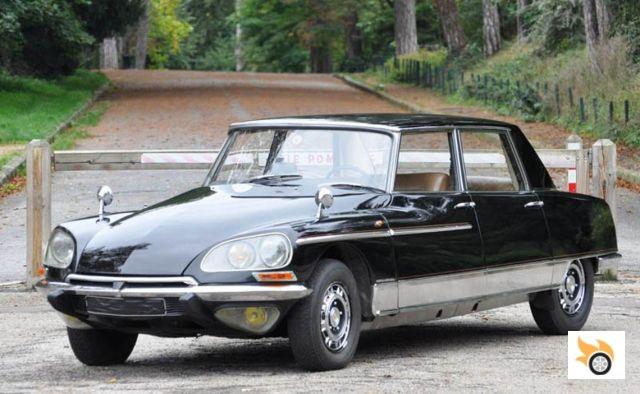
Since 1955, the Citroën DS has become the quintessential top-of-the-range French car. Its design, the work of sculptor Flaminio Bertoni, and its surprisingly effective hydraulic suspension (which also serves to control the steering and brakes) gave it a 20-year head start over the rest of car production. However, since 1964 and the disappearance of Facel Vega, France has been left without a true luxury brand. Fortunately, this is a time when coachbuilders still exist and there is a market for cars made to measure or in very small series.
In Spain we had Serra, but the most prolific in France was Henri Chapron. His work on Citroën DS, such as the Palm Beach convertible or the Léman coupé, led to him being commissioned by Citroën to create the official DS Cabriolet. This gave him wings and he dared to create a saloon on a DS base, the Majesty. It's more statuesque and more luxurious, but only convinces two customers.
But everything changed with the commissioning of the presidential DS by the Elysée. Famous both for its "1PR75" number plate (1 because I'm worth it, PR for PResidentielle and 75 because it's the Paris code) and its 3-volume bodywork. At the rear, the roof is raised and the wheelbase lengthened to accommodate the President of the Republic. The result is surprising, but Henri Chapron managed to maintain a certain level of elegance in the design.
The publicity and prestige gained by Chapron from this prestigious commission encouraged him to try again to launch himself into the creation of a luxury limousine, the Lorraine. Unlike the 1PR75, neither the front nor the wheelbase were altered; only the rear inherited a new design. From square shapes, it becomes three bodies in favor of a flat roof and higher in the rear seats. On board, the luxury is worthy of a Mercedes 600 "Grosser": leather, slats, radio, climate control, radiotelephone, etc..
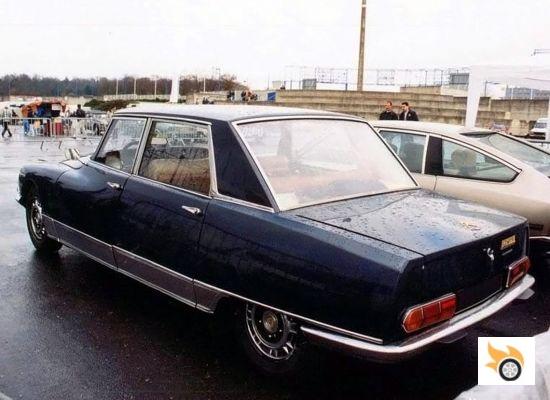 Apparently this DS21 Lorraine belonged to the Portuguese ambassador in France.
Apparently this DS21 Lorraine belonged to the Portuguese ambassador in France.
These cars were made to order, so not all models are mechanically the same. Most of the Lorraine were fitted with the DS23 engine (2.3 litre 115 bhp), while some were fitted with the DS21 engine and there were 2 armoured examples. Aesthetically, the rear end also varied throughout its production. First, it recovered the very DS design - as it had done with the DS Majesty, and then it became more and more square and with bigger and squarer rear lights.
Despite the original and elegant look, Chapron would eventually build 20 units between 1969 and 1975. Twenty units may seem few, but if we take into account that the DS was reaching the end of its commercial life, it is a quite honorable figure. The mystery that remains to be solved is why they named the car Lorraine, a region famous for its blast furnaces and steel industry, but not for its glamour like Palm Beach or Lake Geneva.
Citroën SM Opera (Chapron)
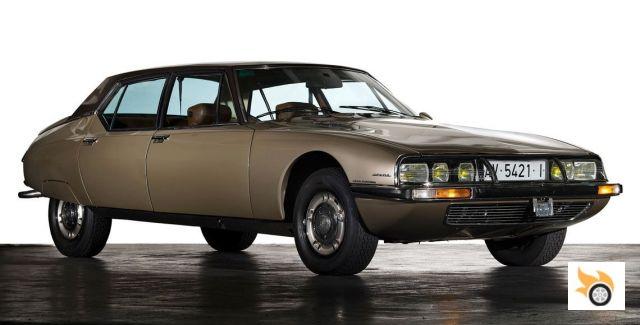
In 1972, Henri Chapron is 86 years old and it is his wife who runs the company. After the success of the DS-based models, the Chapron bodywork had to think about renewal, and the Citroën SM proved to be an ideal base. The Citroën SM, presented in 1970, was a new coup for Citroën: with its Maserati engine, futuristic lines and hydraulic suspension, the car was even voted "Car of the Year 1972" in the United States. Chapron, not letting the opportunity pass him by, created the Mylord convertible on that of the Citroën coupé.
At the same time, Georges Pompidou was President of the Republic and fell in love with the SM. In fact, it is said that he bought one for himself when the car was launched on the market. What is certain is that in April and May 1972 he commissioned Chapron to build two Landaulet limousines for the Elysée. In the end, Pompidou would hardly be able to enjoy his limousines, as he died in 1973. Even so, his successors would continue to use them until 1995, for example with the parade through Paris on the day of Jacques Chirac's investiture to the presidency.
As Chapron already had all the studies and tooling done for the production of a 4-door long SM - the presidential SM - they decided to give Citroën the limousine they were missing from their catalogue.
At the Paris Motor Show in September 1972, Chapron presented the SM Opera. With a 29 cm wheelbase, elegant lines, an extremely luxurious interior and its Maserati V6 (178 bhp to 200 bhp, depending on the version), the Opera caused a sensation. The price too, as in 1974 it cost a whopping 165,000 francs, the equivalent of 3 new Citroën SMs. To give you an idea, a Renault 12 Gordini (the most of the R12) cost in 1970 about 16,000 francs ...
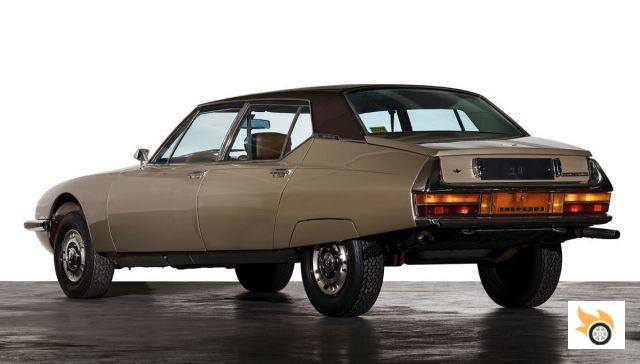
In the end, the Opera was not as successful as Chapron had hoped. Only 8 units were produced between 1972 and 1975, of which one went to Haiti and four arrived in Spain (it was the time when in our country any "different" car was sold in order to meet the demand of wealthy customers and skip the embargoes and quotas that limited the import of cars ridiculously). The reasons for this half success are to be found in the combination of its exorbitant price, the first oil crisis and the purchase of Citroën by Peugeot (goodbye to the Italian V6 and the SM). Today, an SM Opera is close to 200,000 euros. The unit in the photos with original Avila registration was sold at Bonhams in 2009 for 194,500 euros. As for the SM Opera with Madrid registration and dark colour, it is today in the hands of the Dutchman Harrie Brunklaus, one of the members of the board of directors of Phillips.
The Chapron firm remained active until 1985, converting some Peugeot 604s into limousines and making armoured cars, but it never again enjoyed the prestige of its beginnings.
Peugeot 604 Limousine HLZ
In 19785, after the purchase of Citroën, Peugeot presented its top-of-the-range saloon, the 604. The model was intended to rival Mercedes and BMW, which were already making their mark in this segment. In France it had some success, as well as in Holland, but overall, it did not convince. Peugeot's managers believed in their model and were encouraged to propose a long-wheelbase limousine version.
As this was a specialised job, they entrusted the task of its development and production to Heuliez coachbuilders. Peugeot and the coachbuilder were optimistic, thinking that they would be able to produce between 250 and 300 units per year.
In 1978, Heuliez presented its first prototype. The story goes that this prototype was the personal Peugeot 604 of Jean-Pierre Heuliez, son of the founder, cut down by mistake. The operators must have mistaken it for a "brown Peugeot 604 parked outside". Between 1978 and 1980, no less than 16 prototypes were produced. Once commercially launched, the conversion cost 20,000 francs, to which had to be added the 62,000 francs of a basic Peugeot 604. Heuliez, in addition to all the luxury desired by the customer, thus added a total of 62 cm to the Peugeot 604 and could equip it with up to 9 seats.
Between 1980 and 1984, Heuliez would have built just 128 units, including the first 16 prototypes. Most of the 604 HLZs were equipped with the V6 PRV, but there were apparently 9 units with a turbo diesel engine. In any case, we are far from the 250 units per year they intended to sell. And even the advertising for the car at the time makes us think that the Heuliez management lived in a parallel world, as they tell us that in "times of crisis you have to think about habitability and comfort".
Renault 25 Limousine
The Peugeot 604 HLZ was a failure, so Peugeot did not get back into the limousine business, except as a concept car. Even so, Renault is daring with the Renault 25. The R25 is much more modern, original and technological than the Peugeot 604, so why shouldn't they succeed?
The people at Renault decided to lengthen the R25 by 22.7 cm between the two axles. Heuliez is in charge of the development, due to its experience gained in this field with the 604 HLZ. Unlike the Peugeot 604 which was manufactured in Sochaux and sent to Heuliez to be shortened and lengthened, the R25 Limousine is manufactured entirely in the Renault factory.
The car was presented in 1983 to François Mitterrand during a visit to Renault and he ordered an armoured unit for the Presidency of the Republic. The public would not see the car until October 1984 and it would not be marketed until 1985.
Renault's forecasts seemed surreal, expecting to sell 9,000 units. However, they were not as fanciful as one might think: a total of 22,673 examples were sold of the Citroën CX Prestige (25 cm longer than a "normal" CX), a direct rival of the R25 Limousine.
The R25 Limousine, of which 832 units were produced, was available with the 144 bhp 2.7-litre V6, the 182 bhp 2.5-litre V6 Turbo and an 82 bhp 2.1-litre turbodiesel. The finishes are luxurious: leather, wood, individual seats in the Executive Pack, etc.. Renault will keep the R25 Limousine in the catalogue for two years. Today it is an extremely rare model and most were sold in France. Maybe there are some in Spain.
Citroën CX "Honecker" (Nilsson)
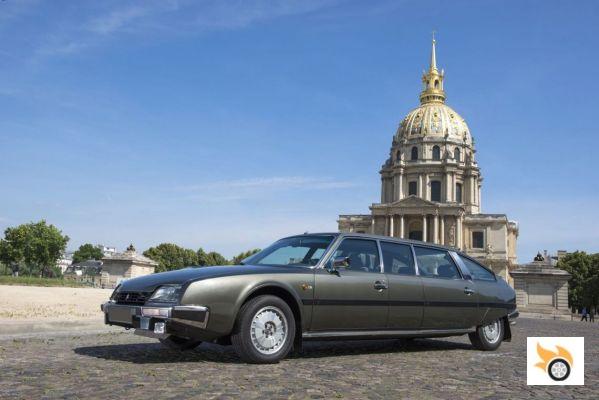
Last February, Artcurial put up for auction at AutoRetro a peculiar Citroën CX with less than 20,000 km of which I was unaware of its existence. It is a limousine on CX Prestige made by a Swedish coachbuilder, Nilsson, for the president of communist Germany, Erich Honnecker.
The Citroën CX, launched in 1974, becomes one of the favourite cars of French leaders, from the Elysée to government delegations, the CX is THE official car of the French Republic. For once for a French model, its success as a prestige car and VIP transport was not limited to France, but extended to the whole world, including the former German Democratic Republic.
Erich Honnecker didn't like the Trabant or the Wartburg that he glorified so much for the people. No, he was an unconditional Citroën and Volvo fan. It is said that he owned as many as 15 Citroën CX Prestige, while the STASI - the regime's feared political police - had around fifteen CX Turbo cars in its fleet to hunt down dissidents in their fast Trabant.
In 1989, communist Germany celebrated 40 years of its existence and one of the guests at the festivities was the French President François Mitterrand. And of course, Honnecker is not going to welcome him with the best of the country's industry and planned economy... a Wartburg. So Honnecker commissioned his trusted coachbuilder, the Swede Nilsson (author of several Volvo 760 limousines for the regime), to build two CX Prestige limousines.
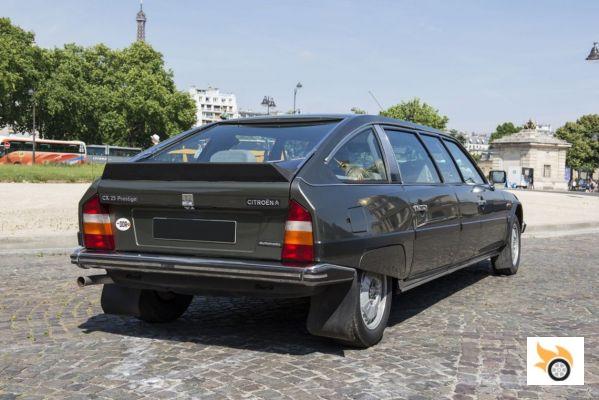
The Swede delivered the two limousines, lengthened by 60 cm and unarmoured, in October 1989. The problem for Honnecker was that on November 9, 1989, the East Germans had had enough of the Trabants and knocked down the Berlin Wall. In the end, he would have little use for his two new toys.
Apparently, Honnecker had also ordered another CX Prestige limousine, armoured this time, from the French coachbuilder Tissier, but as the communist regime that kept him in power disintegrated, he never took possession of the car.
Citroën XM Palace (Heuliez)
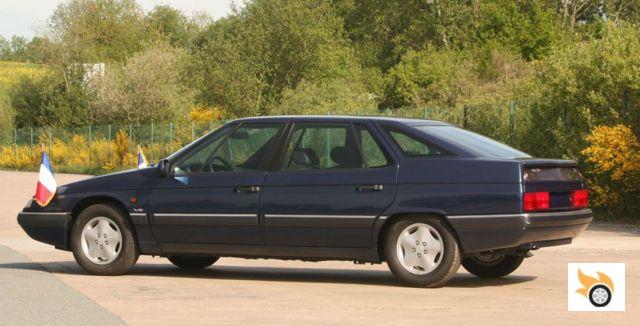
The technical superiority that gave Citroën the DS and SM has endured, with Citroën eventually becoming the favoured base in France for the creation of limousines. The latest one officially made to order by Heuliez (of course) is the XM Palace. Again, this is a limousine for the President of the French Republic. In this case, it was also used very sporadically: when Jacques Chirac visited the Heuliez facilities and little else.
Presented at the 1993 Geneva Motor Show, the XM Palace was based on an XM Break. Compared to a standard XM saloon, the Palace had a wheelbase 13 cm longer and a rear overhang 20 cm longer. Like all top-of-the-range models from the PSA group, it was fitted with the famous V6 petrol PRV.
Peugeot 607 Paladine
When elected, French presidents like to parade around the capital in a limousine. None of them can resist imitating De Gaulle, even if they don't even come close, but that's another matter. Before the current president, François Hollande and his ride in a standard Citroën DS5 Hybrid - a car lent by Citroën for the occasion - Nicolas Sarkozy also wanted to ride in a limousine: the Peugeot 607 Paladine.
The 607 Paladine is a concept car presented at the Geneva Motor Show in 2000 by Heuliez. Longer than 50 cm and with only two individual seats in the back, the car is also characterised by its Landaulet bodywork, i.e. a cabriolet exclusively for the rear passengers. It is not that the French coachbuilder wanted to try to sell limousines again, but that it was to serve Peugeot to promote itself as a high-end manufacturer of coupé-cabriolets. Heuliez made the roofs of the Peugeot 206 CC. In the end, Heuliez may have gained the most in history, because in addition to the contracts it already had with Peugeot, from 2004 to 2009 it would manufacture the Opel Tigra TwinTop.
The 607 Paladine is today kept in the Peugeot museum, although the only time I visited the museum it was not on display. In the end it only appeared twice in public, in Geneva and at Sarkozy's investiture. In any case, a mass production, even a small one, was impossible. On the one hand, the roof mechanism - and the roof itself - cancelled out the boot, and on the other hand, the fuel tank had a capacity of 6 to 7 litres of super fuel. To power a 3.0-litre V6 in a car that weighs 200 kg more than a standard 607, that's rather little.

























